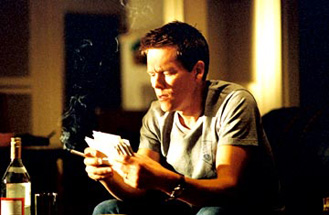On the Big Board |
| Position |
Staff |
In Brief |
| 170/214 |
Max Braden |
Death Sentence does have an edge over A History of Violence in that this is more unpredictable. |
In 1974, Charles Bronson starred in what was widely considered to be his best movie, Death Wish. Based on a Brian Garfield novel that became a franchise of Death-related vengeance books, Death Wish followed the life of Charles Kersey as he made good on a promise to get back at all of the robbers who had entered his house, stolen his things, and defiled his daughter. Bronson was the perfect avenging angel, and this became his defining role as an action star. He ran the premise into the ground by starring in five different Death Wish movies. These were not, however, adaptions of Garfield’s other works.
Fast forward to 2007. Saw creator James Wan has decided to make a theatrical adaptation of the direct sequel to Death Wish, Death Sentence. Before Bronson fans get too excited, it’s important to note that the Paul Kersey character is not the star of Death Sentence. Instead, an entirely new family is terrorized by criminals, creating another Kersey-type of vigilante in John Hume (Kevin Bacon). Having seen his family fall victim to gangland activity, Hume sets out to exact revenge upon all of the members involved. Tracking his trail of broken bodies is a homicide detective (former Talk Soup host Aisha Tyler) who wants to stop the man before he doles out more justice on the gang’s conflicted leader, Billy Darly (Garrett Hedlund of Four Brothers).
Upon release in the mid-1970s, Death Wish was considered to have wildly controversial subject matter due to its premise of the righteousness of vigilante justice. These days, that’s hardly a unique philosophy in cinema, but Wan already reinvigorated one genre, horror, with his unique themes in Saw. BOP would not put it past him to accomplish a similar feat with eye-for-an-eye cinema. (David Mumpower/BOP)
|
|
|
|




